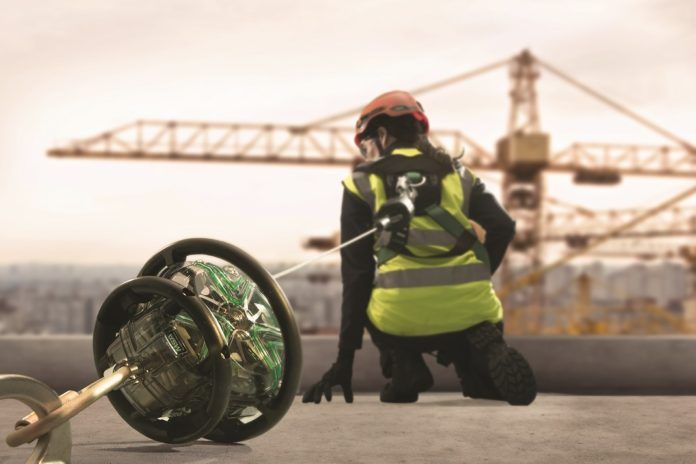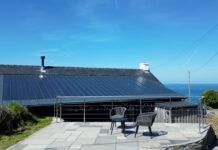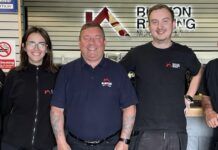Tim Bissett, technical manager for fall protection at MSA Safety, looks at the relevant standards relating to leading edge work, what to look out for in the equipment you use, and what processes you need to have in place, including the vital importance of a rescue plan
Despite steady progress, falls from height remain a common cause of injury and death across Europe. This is why regulations surrounding fall protection equipment exist and are regularly updated – to help ensure manufacturers meet certain standards. These regulations, and the associated standards that manufacturers of fall protection equipment must meet, are important when working in leading edge applications.
What is leading edge work?
“Leading edge work” or “edge working” is defined as working at any unprotected edge of a platform, floor, or other construction point where there’s a risk that the lifeline a worker is using may come in contact with an exposed edge, or edge of the working surface.
In many scenarios, leading edge applications occur when a worker is connected to an anchor point below their back D-ring, although it’s also possible when anchor points are above this position.
Work in leading edge applications presents its own challenges and safety hazards; one of which is the greater risk of lifelines being frayed, cut, or severed on impact with the edge in the event of a fall. This is complicated further should the worker swing after falling, creating a pendulum-like motion. The friction this causes can increase the likelihood of the lifeline being cut or severed.
These potential risks place a sharp focus on testing criteria within relevant standards, following best practice and choosing the right equipment for the job. Let’s start by looking at the standards you need to be aware of.
Standards relating to leading edge work
First things first, before any leading edge work takes place, check that the equipment you’re using adheres to the relevant standards. These standards can seem complex, so I’ve broken them down below.
PPE Regulation (EU) 2016/425
These regulations, which were first introduced in 2018, imposed additional requirements on manufacturers of Personal Protective Equipment (PPE), including an assessment of the risks against which the PPE is intended to protect and changes in requirements for product marking. It’s vital that purchasers of PPE take steps to ensure that their suppliers meet these new regulatory requirements. You can do so by looking out for the CE marking affixed to PPE. This provides evidence of compliance with the applicable EU legislation.
EN 360 and CNB/P/11.060
This standard (EN 360:2002), relating to retractable fall arrest devices, is currently under revision and is expected to be out for review shortly prior to publication. It is likely, given their increasing popularity, that an updated standard will encompass twin-legged, as well as single-unit retractable devices.
Be mindful that overhead or traditional SRLs meeting the requirements of EN 360:2002 are not necessarily designed or rated to arrest a fall over an edge. Necessary steps should always be taken to select the absolute right equipment for the job at hand.
CNB/P/11.060 is a coordination document associated with EN 360:2002. It outlines the testing criteria for the use of SRLs in leading edge applications, specifically how SRLs must carry evidence of dynamic performance, dynamic strength, and static strength within a leading edge application with the retractable lifeline stressed over an edge. Adherence to this coordination document and the testing criteria within it are central to mitigating the potential risk of lines fraying or being cut in the event of a fall.
First port of call: hierarchy of fall protection
Typically, fall protection is associated with saving a worker’s life in the event of a fall. And while this isn’t strictly wrong, it’s not the ideal scenario either. The hierarchy of fall protection helps to prevent a worker ever getting into a situation where they could fall by prioritising various applications from “most preferred” to “least preferred”. Leading edge applications will inevitably mean working in fall arrest – the “least preferred” option. It’s not something to take lightly and should always be a last resort, taken only once the first three options outlined below have been explored.
1. Hazard elimination. This means the removal of the hazard by designing it out wherever possible. It’s the “most preferred”, safest option. If there’s no hazard, there’s no fall.
2. Collective (or passive) fall prevention. This defines products that prevent access to a fall hazard. A guardrail, for instance, acts as a physical barrier between the worker and the hazard.
3. Fall restraint. If working in fall restraint, then there is no barrier between the user and the fall hazard. Instead, they’re using fall protection equipment – harness, lanyard, and anchor point – that will not allow them to reach the hazard. For example, a worker who is working in fall restraint may use a six-metre lanyard to connect to an anchor point at least seven metres away from the fall hazard.
4. Fall arrest. This defines equipment designed to catch (or “arrest”) the worker in the event of a fall. This is the “least preferred” option because arresting a fall exposes the worker to significant forces, putting them at risk of physical harm. Rescuing a fallen worker (which I’ll come onto a little later) can also be a challenging and potentially dangerous process.
Let’s take a look at some key things to consider if – after following this hierarchy – edge working remains the only option available.
Choosing the right harness for the job
First things first, all harnesses on the market should be compliant in accordance with EN 361:2002. That’s a given. But a good harness – one that’s comfortable, doesn’t restrict workers’ movement, and mitigates impact on the user’s body in the event of a fall – goes beyond mere compliance.
Fit is fundamental to achieving this. Leg and shoulder straps should be easily adjustable for a comfortable, snug fit. The user’s finished position in a fall scenario should be heads up and slightly forward-leaning. This is important for correct distribution of load through the leg straps and load through the body, such that the spine and pelvis are being properly supported and protected. In a fall event, a good quality, well-fitted harness can help limit the effects of suspension trauma/syncope.
While incredibly important, fit is just one aspect. Fall protection harnesses are highly engineered pieces of kit and many design features dictate performance, such as appropriate materials for improved fit and speed of donning, or how dirt may affect the webbing (to name just a few). If in doubt about which harness is most appropriate for you and/or the job at hand then consult with a reputable manufacturer.
Do nothing without training
Making sure your workers have completed a comprehensive training programme is absolutely essential. Not only do employers have a responsibility to provide suitable information, instruction and training for their employees, but training gives those working at height the confidence, knowledge and skills required to carry out their work safely and efficiently. It will also teach operatives how to properly use, care and maintain their equipment.
If you must, be prepared
For many, having followed the hierarchy of fall protection, edge working remains an unavoidable reality. If that is the case, then the steps you take before any work takes place are vital. So, stop, think, and ask yourself these three questions:
1. Training, training, training. Have my workers received the very best training for the specific job and are they as prepared as they can be to work safely and confidently?
2. Am I up to speed with and implementing the very latest legislation and best practice processes?
3. Is the equipment I’m using not only compliant with the relevant legislation, but designed specifically for work in leading edge applications?
Finally, remember, you don’t have to tackle all of this alone. Any reputable fall protection provider – like MSA Safety – is readily available for consultation on any of the above. They will be willing to help guide you on implementing the very best and safest work at height solutions. And at no other time is that more important than when working in leading edge applications.




